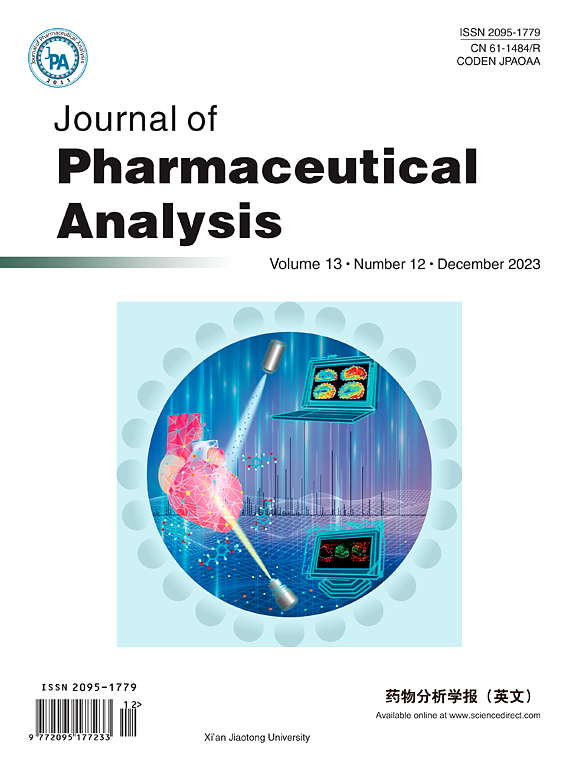Oxalate regulates crystal-cell adhesion and macrophage metabolism via JPT2/PI3K/AKT signaling to promote the progression of kidney stones
IF 8.9
1区 医学
Q1 PHARMACOLOGY & PHARMACY
引用次数: 0
Abstract
Oxalate is an organic dicarboxylic acid that is a common component of plant foods. The kidneys are essential organs for oxalate excretion, but excessive oxalates may induce kidney stones. Jupiter microtubule associated homolog 2 (JPT2) is a critical molecule in Ca mobilization, and its intrinsic mechanism in oxalate exposure and kidney stones remains unclear. This study aimed to reveal the mechanism of JPT2 in oxalate exposure and kidney stones. Genetic approaches were used to control JPT2 expression in cells and mice, and the JPT2 mechanism of action was analyzed using transcriptomics and untargeted metabolomics. The results showed that oxalate exposure triggered the upregulation of JPT2, which is involved in nicotinic acid adenine dinucleotide phosphate (NAADP)-mediated Ca mobilization. Transcriptomic analysis revealed that cell adhesion and macrophage inflammatory polarization were inhibited by JPT2 knockdown, and these were dominated by PI3K/AKT signaling, respectively. Untargeted metabolomics indicated that JPT2 knockdown inhibited the production of succinic acid semialdehyde (SSA) in macrophages. Furthermore, JPT2 deficiency in mice inhibited kidney stones mineralization. In conclusion, this study demonstrates that oxalate exposure facilitates kidney stones by promoting crystal-cell adhesion, and modulating macrophage metabolism and inflammatory polarization via JPT2/PI3K/AKT signaling.草酸盐通过 JPT2/PI3K/AKT 信号调节晶体细胞粘附和巨噬细胞代谢,促进肾结石的进展
草酸盐是一种有机二羧酸,是植物性食物的常见成分。肾脏是排泄草酸盐的重要器官,但过量的草酸盐可能会诱发肾结石。木星微管相关同源物 2(JPT2)是钙动员的关键分子,其在草酸盐暴露和肾结石中的内在机制尚不清楚。本研究旨在揭示JPT2在草酸盐暴露和肾结石中的作用机制。研究采用遗传学方法控制JPT2在细胞和小鼠中的表达,并利用转录组学和非靶向代谢组学分析了JPT2的作用机制。结果表明,草酸盐暴露引发了JPT2的上调,而JPT2参与了烟酸腺嘌呤二核苷酸磷酸酯(NAADP)介导的钙动员。转录组分析表明,JPT2敲除可抑制细胞粘附和巨噬细胞炎症极化,而这些分别由PI3K/AKT信号主导。非靶向代谢组学显示,JPT2基因敲除抑制了巨噬细胞中琥珀酸半醛(SSA)的产生。此外,小鼠缺乏 JPT2 会抑制肾结石的矿化。总之,本研究表明,草酸盐暴露通过促进晶体-细胞粘附,并通过 JPT2/PI3K/AKT 信号调节巨噬细胞代谢和炎症极化,从而促进肾结石的形成。
本文章由计算机程序翻译,如有差异,请以英文原文为准。
求助全文
约1分钟内获得全文
求助全文
来源期刊

Journal of Pharmaceutical Analysis
Chemistry-Electrochemistry
CiteScore
16.20
自引率
2.30%
发文量
674
审稿时长
22 weeks
期刊介绍:
The Journal of Pharmaceutical Analysis (JPA), established in 2011, serves as the official publication of Xi'an Jiaotong University.
JPA is a monthly, peer-reviewed, open-access journal dedicated to disseminating noteworthy original research articles, review papers, short communications, news, research highlights, and editorials in the realm of Pharmacy Analysis. Encompassing a wide spectrum of topics, including Pharmaceutical Analysis, Analytical Techniques and Methods, Pharmacology, Metabolism, Drug Delivery, Cellular Imaging & Analysis, Natural Products, and Biosensing, JPA provides a comprehensive platform for scholarly discourse and innovation in the field.
 求助内容:
求助内容: 应助结果提醒方式:
应助结果提醒方式:


